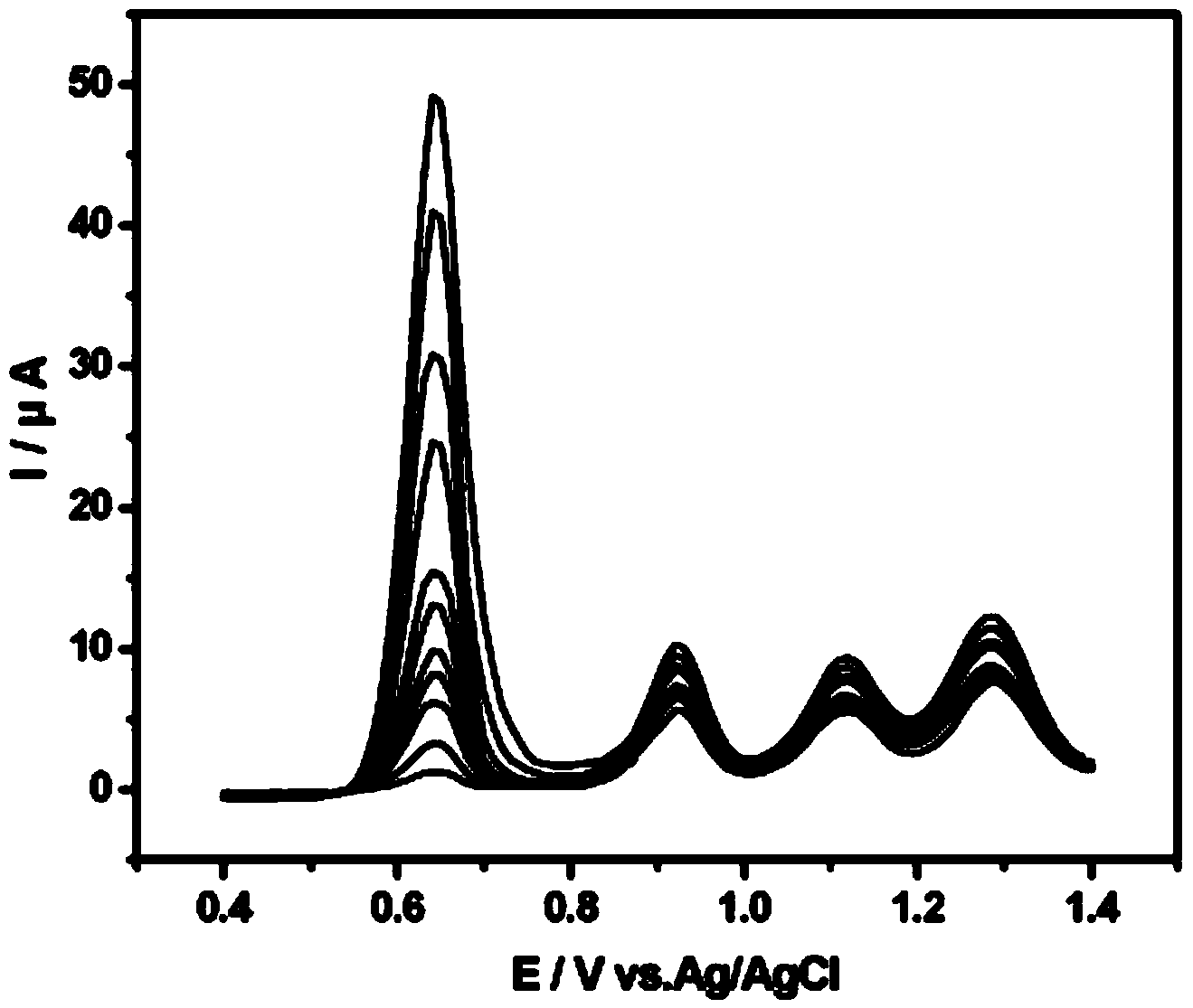Electrochemical sensor for simultaneous detection of DNA bases
An electrochemical and sensor technology, applied in the field of electrochemical detection of four DNA bases, can solve the problems of cumbersome operation, sample turbidity, poor stability, etc., and achieve the effect of safe operation and less pollution
- Summary
- Abstract
- Description
- Claims
- Application Information
AI Technical Summary
Problems solved by technology
Method used
Image
Examples
specific Embodiment approach 1
[0025] Specific embodiment one: a kind of electrochemical sensor for the simultaneous detection of DNA bases of the present embodiment is characterized in that it is carried out according to the following steps:
[0026] Step 1: Ultrasonic disperse the graphene oxide powder prepared by the Hummer method in double-distilled water for 10-15 minutes to obtain a graphene oxide suspension with a concentration of 0.2-0.5 mg / mL; add bromocresol purple to a concentration of 0.01 M NaNO 3 dispersed in the solution to obtain a concentration of 1.0×10 -3 ~2.0×10 -3 The bromocresol purple solution of M;
[0027] Step 2: Take 5-10 μL of the graphene oxide suspension obtained in Step 1, drop-coat it on the surface of the glassy carbon electrode, place it under an infrared lamp to dry, and cool to room temperature after drying to obtain a graphene oxide-modified glassy carbon electrode; The glassy carbon electrode modified by graphene oxide was placed in PBS solution with pH=5~7 for const...
specific Embodiment approach 2
[0033] Embodiment 2: This embodiment differs from Embodiment 1 in that: the ultrasonic dispersion in double-distilled water described in Step 1 lasts for 12-15 minutes. Others are the same as in the first embodiment.
specific Embodiment approach 3
[0034] Embodiment 3: This embodiment differs from Embodiment 1 or Embodiment 2 in that: the ultrasonic dispersion in double distilled water described in step 1 is 15 minutes. Others are the same as in the first or second embodiment.
PUM
 Login to View More
Login to View More Abstract
Description
Claims
Application Information
 Login to View More
Login to View More - R&D
- Intellectual Property
- Life Sciences
- Materials
- Tech Scout
- Unparalleled Data Quality
- Higher Quality Content
- 60% Fewer Hallucinations
Browse by: Latest US Patents, China's latest patents, Technical Efficacy Thesaurus, Application Domain, Technology Topic, Popular Technical Reports.
© 2025 PatSnap. All rights reserved.Legal|Privacy policy|Modern Slavery Act Transparency Statement|Sitemap|About US| Contact US: help@patsnap.com



